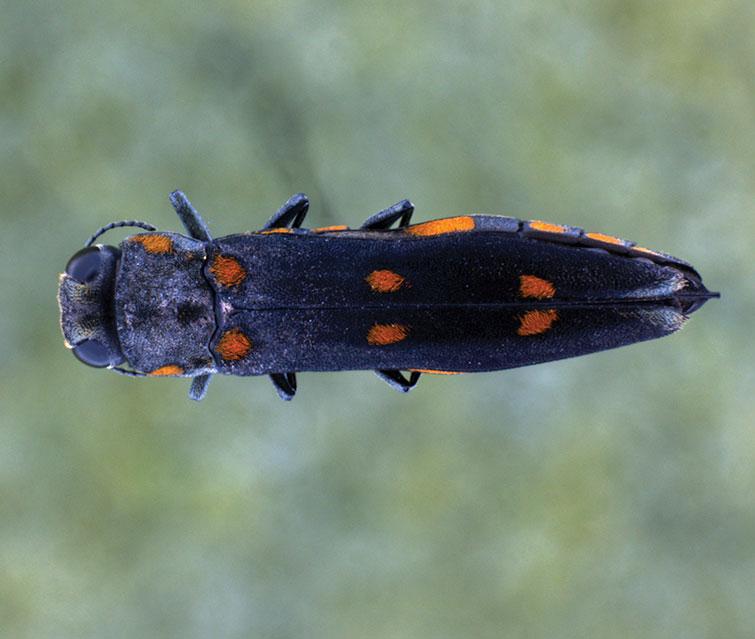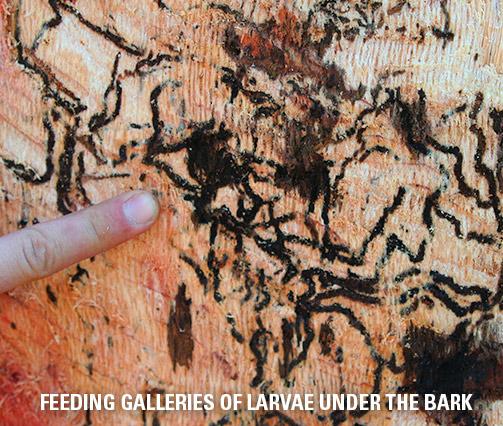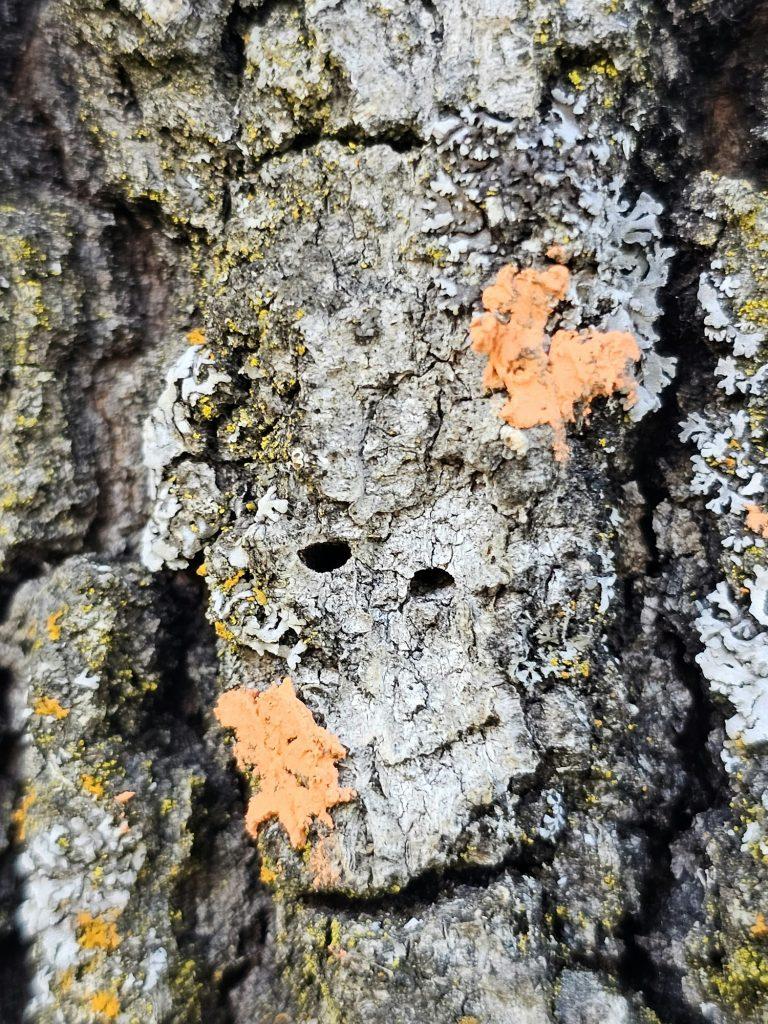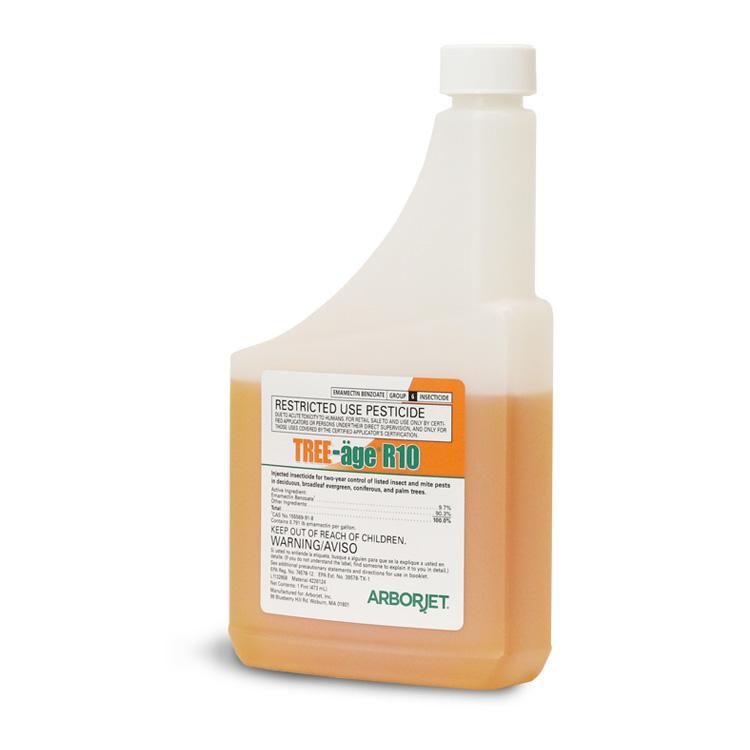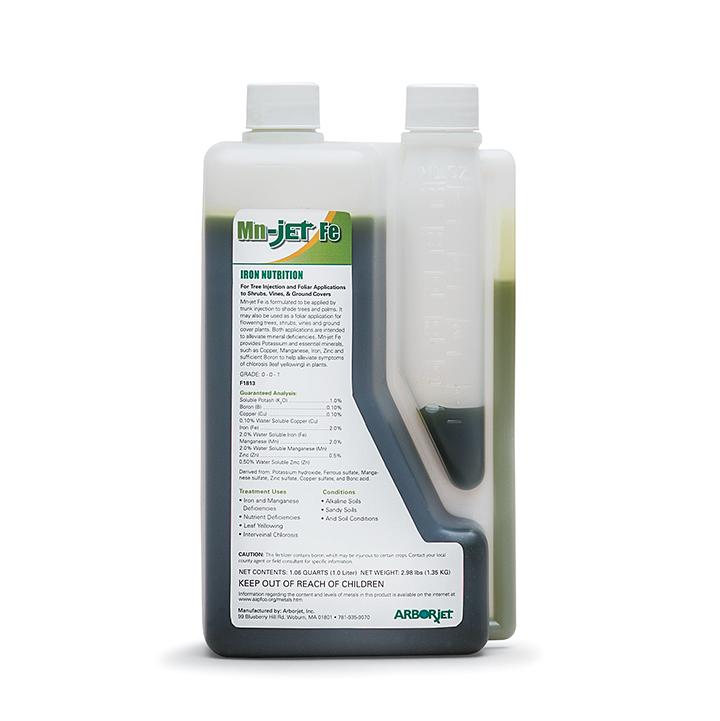Goldspotted Oak Borer
The Goldspotted Oak Borer (GSOB, Agrilus coxalis) is a flat-headed borer that was introduced to the San Diego, California area. It has since spread to five other southern California counties.
GSOB are currently known to attack and kill three species of oak: coastal live, canyon live, and California black. Adult GSOB are usually 10mm in length and have bullet-shaped black bodies with gold spots on their back and sides. Oaks with a DBH of 18 inches or above are at the highest risk of dying from a GSOB infestation.
Common Symptoms
GSOB attacks can be recognized by extensive bark staining, which can appear as black regions or red blistering with sap oozing from under the bark. Adult exit holes signify previous GSOB attack. These emergence holes are D-shaped and about 1/8” in width. On coast live oak, the bark is frequently removed by woodpeckers as they forage for larvae and pupae; this reveals the deep red-colored outer bark that contrasts starkly with the gray exterior bark. The presence of the larvae and their galleries, the emergence holes, and the associated woodpecker damage all distinguish GSOB infestation from infection with Phytophthora ramorum, the pathogen that causes sudden oak death. The infestation of a tree eventually results in dieback of entire branches and tree mortality.
Treatments
Treatments should be applied preventively, before extensive disruption to the vascular tissues occurs. Dieback symptoms should be < 40%. We recommend treatment when GSOB is in your area, but trees still appear healthy for best outcomes. Treat oaks with TREE-äge® (G4 and R10) or IMA-jet® or IMA-jet 10. The large vasculature in oaks will readily move IMA-jet upward into the canopy. TREE-äge is a little more viscous and may take slightly longer to inject but will provide a longer residual effect. TREE-äge and IMA-jet will kill the GSOB larvae inside the tree. To give the tree a greater benefit, a follow-up application of Mn-jet Fe® or NutriRoot® is recommended.
When To Treat
Treat oaks if GSOB is reported nearby. Do not wait for visible dieback of canopy, as there is significant delay between disruption to the vascular tissues and symptoms in the canopy. Delaying GSOB treatment could result in canopy dieback or tree loss.
Applications should be made in the spring, at least 30 days prior to expected adult emergence in June; however, treatment may be applied later in the growing season (July – November) to protect trees. Uptake of formulation is fastest when trees are actively transpiring when soil moisture is good. GSOB treatment in the spring will prevent the adult beetles from feeding and laying eggs in the tree, whereas summer treatment will kill the larval stage of GSOB feeding under the bark.
What To Expect After Treatment
TREE-äge will kill the GSOB larvae under the bark as well as adult beetles that feed on foliage and will provide two years residual control.
IMA-jet will also kill the GSOB larvae under the bark and deter adult feeding in the canopy. A single application of IMA-jet will provide control of GSOB for a full year.
The long-term prognosis for trees that are treated early (i.e., before vascular injury) is very good to excellent. Tree recovery from an established infestation is relative to the severity of the infestation at the time of treatment.
References And Photo Credits
Main photo of adult GSOB taken by USDA Forest Service, Northeastern Area FHP, Durham, NH Office
GSOB larval galleries taken by Tom Coleman, USDA Forest Service, Bugwood.org
Bark staining in response to GSOB activity taken by Don Grosman, Arborjet Inc.
D-shaped adult GSOB emergence holes taken by Don Grosman, Arborjet Inc.

